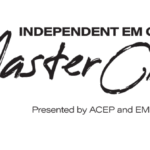
Are DTC ads effective? It depends on who you ask. Some DTC marketers will throw out vanity metrics like awareness, but as far as driving business objectives, new Rx’s, there is no doubt that pharmaceutical DTC ads are less effective. However, they do drive education on certain conditions. The path between awareness and actually filling an Rx has become more complicated, and overall trust in pharma has hit rock bottom. But why?
1. Increased Diagnosis, Healthcare Engagement & Prescription Initiation
- DTC ads have been shown to raise awareness of chronic conditions and encourage people—even those undiagnosed—to seek medical attention.
- Patients exposed to DTCA are more likely to schedule doctor visits and maintain follow-up for years afterward.USC Schaeffer+1
2. Medication Adherence & Therapy Discussions
- Though modest, DTCA exposure is associated with improvements in adherence among those already on medication—typically a 1–2% rise when advertising increases by 10%.American Journal of Medicine+15Wikipedia+15PMC+15
- Ads can stimulate conversations between patients and providers; up to 27% of consumers report booking appointments for previously unmentioned conditions following DTC exposure.TIME+6PMC+6Financial Times+6
3. Impact on Prescribing Behavior & Drug Utilization
4. Spending Trends & Promotional Allocation
- DTC advertising budgets have risen dramatically—from $1.3 billion in 1996 to around $6 billion by 2016.Bloomberg School of Public Health
- In 2020, pharmaceuticals spent a median of $20.9 million per drug on promotions, with 13.5% allocated to DTC. Some blockbuster drugs devoted over 90% of promo budgets to consumer-targeted advertising.Bloomberg School of Public Health
- TV commercials surged nearly 5-fold between 1997 and 2016, totaling hundreds of thousands of ads.JAMA Network+1
5. Information Quality & Regulatory Concerns
- Studies have found that many DTC ads:
- The FDA has emphasized the need for clear, balanced messaging to ensure truthful net impressions, prompting legislative and regulatory actions.Federal Register+2PMC+2
6. Policy Debates & Public Health Implications
- Critics argue that DTC ads prioritize profits over patient welfare and can drive up healthcare costs via branded prescriptions.TIME
- However, recent opinion pieces warn that restricting DTCA could suppress detection and treatment of chronic diseases, ultimately harming public health outcomes.AP News+3The Washington Post+3Wikipedia+3
Summary Table
| Aspect | Key Takeaways |
|---|---|
| Awareness & Engagement | Boosts condition awareness, drives doctor visits and new prescriptions |
| Adherence | Modest improvement among existing patients |
| Physician Influence | Strong effect of patient requests on prescribing—even for less effective drugs |
| Spending Patterns | Massive budgets; substantial portion allocated to consumer ads |
| Content Concerns | Often unbalanced: benefits overplayed, risks underrepresented |
| Regulatory Balance | Calls for transparency must be weighed against public health benefits |
So, the reality is…
- Effectiveness: DTC advertising clearly mobilizes patient engagement, leading to increased diagnosis and treatment initiation.
- Concerns: There’s ample evidence of imbalanced messaging and potential overemphasis on less beneficial branded drugs.
- Ongoing Debate: Policymakers face the challenge of regulating DTCA to preserve access to health information without promoting unnecessary or costly treatments.
Would you like to explore specific disease categories, regulatory frameworks, or comparative studies (e.g., U.S. vs New Zealand)? Or dive deeper into the policy implications of recent proposals around DTC advertising restriction?










